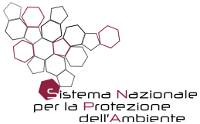This thesis has been performed in the frame of the project SHARE (Sustainable Hydropower in Alpine Rivers Ecosystems), conducted by the water section of ARPA Valle d’Aosta and it’s based on three main objectives: reviewing of methods and tools to evaluate and assess the natural capital represented by the river wet channel and the riparian ecosystems of the Dora Baltea river; determine a method, index and/or metric of index that fits better to IFF (fluvial functionality index) being less time and resources consuming for the Alpine river network of the Aosta Valley Region and define a new index (TH, TeleHybrid index) based on aero photogrammetric images - GIS analysis (using metrics and sub-indexes derived from the reviewed methods) and on hydrological parameters.
The review of eleven indexes revealed that only the RCEs-IAR (riparian channel environment simplified, human impacts on rivers) index, and the SREFF (method for the screening of the ecosystem resources of the rivers to support management) index are enforceable in an Alpine context, at any altitude, until where a flood plain is present and with an aero photogrammetric approach. Therefore we choose the RCEs-IAR index which resulted easy to be implemented and short time consuming but not perfectly fitting with the regional context, and the SREFF index which required a rather high amount of calculations and computational efforts. This latter index is in fact based on well defined quantitative sub-indexes related to the characteristics both of the river and the surrounding areas, and it is more focused on detailing the pressures and the impacts on the river.
The performance of these two indexes has been compared with the performance of the IFF, a field based index that is officially considered in the regional set of law but it is rather time and resources consuming and needs a trained staff for being applied. As a first result, RCEs-IAR and SREFF showed too marked differences with the IFF index. Therefore the elaboration of the TH (TeleHybrid) index as a selection of sub-indexes and hydrological parameters was performed. The best set of sub-indexes for the TH index has been found, after iterative processes, using two sub-indexes of the SREFF index and five sub-indexes of the RCEs-IAR index. Moreover the natural flows discharges data have been included in the TH index calculation.
The TH index and the IFF index have been successively compared, showing highly significant synchronicity all over the whole length of the Dora Baltea river (Aosta area excluded). Moreover, the TH index was able to predict 72% of the IFF classes over the 180 studied river stretches, revealing that the TH index can predict in a fairly good way the potential IFF class of a river stretch. In the future, more specific elaborations on the parameters modulating TH sensitivity should allow the optimization of the model performance, especially in the urbanized areas of Aosta.
This work has shown that by means of a photogrammetric approach it is possible to predict the classes of a field based index such as the IFF, therefore the TH index can be proposed as a new tool for river management in the Alpine context, being less time and resources consuming than field based methods.
The review of eleven indexes revealed that only the RCEs-IAR (riparian channel environment simplified, human impacts on rivers) index, and the SREFF (method for the screening of the ecosystem resources of the rivers to support management) index are enforceable in an Alpine context, at any altitude, until where a flood plain is present and with an aero photogrammetric approach. Therefore we choose the RCEs-IAR index which resulted easy to be implemented and short time consuming but not perfectly fitting with the regional context, and the SREFF index which required a rather high amount of calculations and computational efforts. This latter index is in fact based on well defined quantitative sub-indexes related to the characteristics both of the river and the surrounding areas, and it is more focused on detailing the pressures and the impacts on the river.
The performance of these two indexes has been compared with the performance of the IFF, a field based index that is officially considered in the regional set of law but it is rather time and resources consuming and needs a trained staff for being applied. As a first result, RCEs-IAR and SREFF showed too marked differences with the IFF index. Therefore the elaboration of the TH (TeleHybrid) index as a selection of sub-indexes and hydrological parameters was performed. The best set of sub-indexes for the TH index has been found, after iterative processes, using two sub-indexes of the SREFF index and five sub-indexes of the RCEs-IAR index. Moreover the natural flows discharges data have been included in the TH index calculation.
The TH index and the IFF index have been successively compared, showing highly significant synchronicity all over the whole length of the Dora Baltea river (Aosta area excluded). Moreover, the TH index was able to predict 72% of the IFF classes over the 180 studied river stretches, revealing that the TH index can predict in a fairly good way the potential IFF class of a river stretch. In the future, more specific elaborations on the parameters modulating TH sensitivity should allow the optimization of the model performance, especially in the urbanized areas of Aosta.
This work has shown that by means of a photogrammetric approach it is possible to predict the classes of a field based index such as the IFF, therefore the TH index can be proposed as a new tool for river management in the Alpine context, being less time and resources consuming than field based methods.
The PDF version of the thesis is available for download here.


